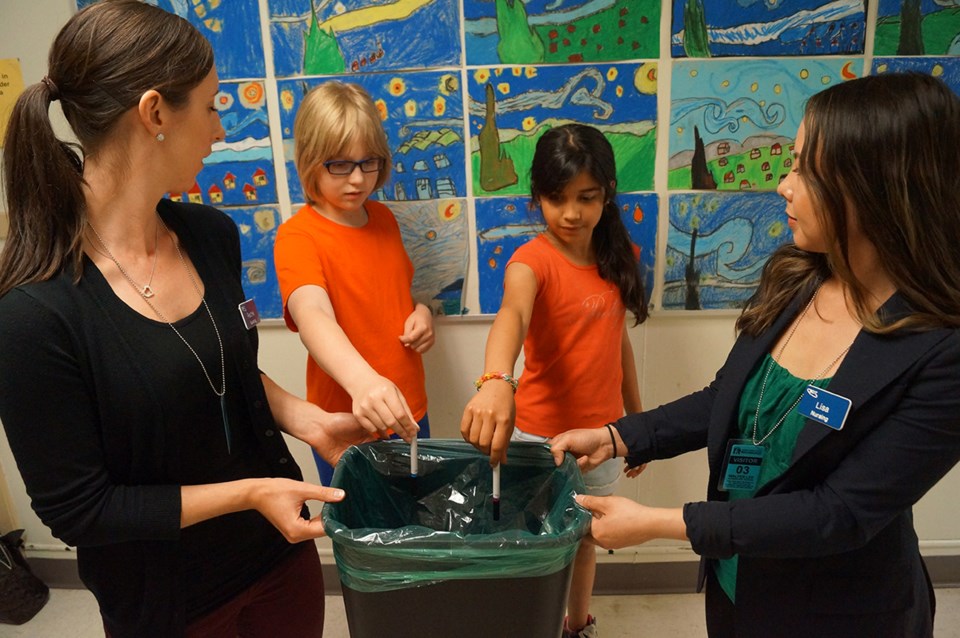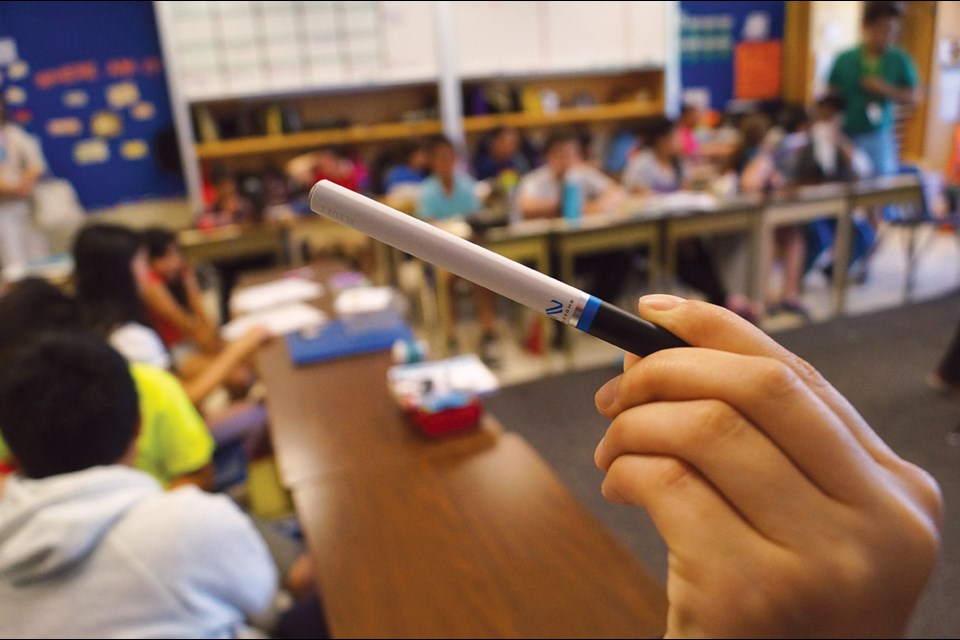Four teenagers gather in a school field in Richmond with a football. They circle one another for a huddle, only this time they aren’t talking about the next play. Rather, a thick plume of vapour rises above their heads.
Kids using e-cigarettes is an all too common sight these days and registered nurse Shannon Elliot, a public health instructor at the British Columbia Institute of Technology, believes they’re on a path to nicotine addiction.
“Tobacco companies are marketing e-cigarettes to youth through the use of appealing flavours and candy-like appearance in an effort to get them addicted to nicotine and continue a pattern of buying their products,” said Elliot, who, with the help of Richmond Public Health, has spoken to more than 600 students in 26 classes from nine different schools this year, about the dangers of “vaping” tobacco.
The most recent class Elliot spoke to — alongside two, third-year nursing students, Rachel Smith and Lisa Tran, who made a presentation on e-cigarettes — was a group of Grade 5 students at Walter Lee elementary school.
“One of the problems about e-cigarettes is that they are unregulated (by Health Canada) but they still contain a number of chemicals, just like cigarettes,” said Smith.
Elliot noted most all of the “e-juice” being sold in Canada is manufactured in China, without labels showing any or all of the ingredients.
She said improper labelling makes it easier for youth to buy the e-juice.

In March, a House of Commons health committee did recommend creating laws surrounding advertising and use in public places. Meanwhile, in B.C., there was good news for health advocates, such as Elliot, as Health Minister Terry Lake announced in March that the province would treat e-cigarette sales and advertising the same as tobacco products.
“This legislation will limit the exposure to children of the possible dangers of e-cigarette vapour and the potential that e-cigarettes have to normalize smoking behavior,” stated Lake.
Elliot is calling on Health Canada to conduct health studies.
“There are no real studies on the harmful effects of e-cigarettes. We do know they have things like formaldehyde and propylene glycol (found in antifreeze) in them and those cause cancer,” said Elliot.
Still, for every reasonable suggestion based on science, as well as concerns about lack of information, numerous websites can be found making unfounded claims that e-cigarettes are harmless.
Even without substantiated scientific evidence, Elliot noted that the nicotine in the e-juice is addictive and can hook teenagers, whose bodies are still developing.
E-cigarettes are battery-powered plastic or metal sticks that resemble actual cigarettes. Users put flavoured, nicotine-rich liquid in the stick and push a small button that heats it to produce vapour. Users can adjust their nicotine intake by choosing a higher voltage e-cigarette, or by choosing a liquid with more nicotine (if the quantity is indicated).
The fact the industry has marketed the liquid as “juice” says it all, for Elliot.
“The tobacco companies have bought up the largest e-cigarette brands and companies. They’re really smart at what they do,” she said, noting 90 per cent of people who smoke started in adolescence.
For adults, Elliot does concede the vapour can be a better alternative to inhaling smoke, but she notes the benefits of “vaping” are only for those people who are already smoking tobacco cigarettes. Furthermore, the e-cigarette chemicals may still cause cancer (the frustration of Elliot is evident when she must qualify the potential harms done by e-cigarettes, given the lack of federal studies).
Tran said students aren’t aware of the risks of e-cigarettes, like they are with tobacco cigarettes, but they’re quick to learn. She and Smith spend about an hour with each class, testing the students on the facts and myths surrounding e-cigarettes.



